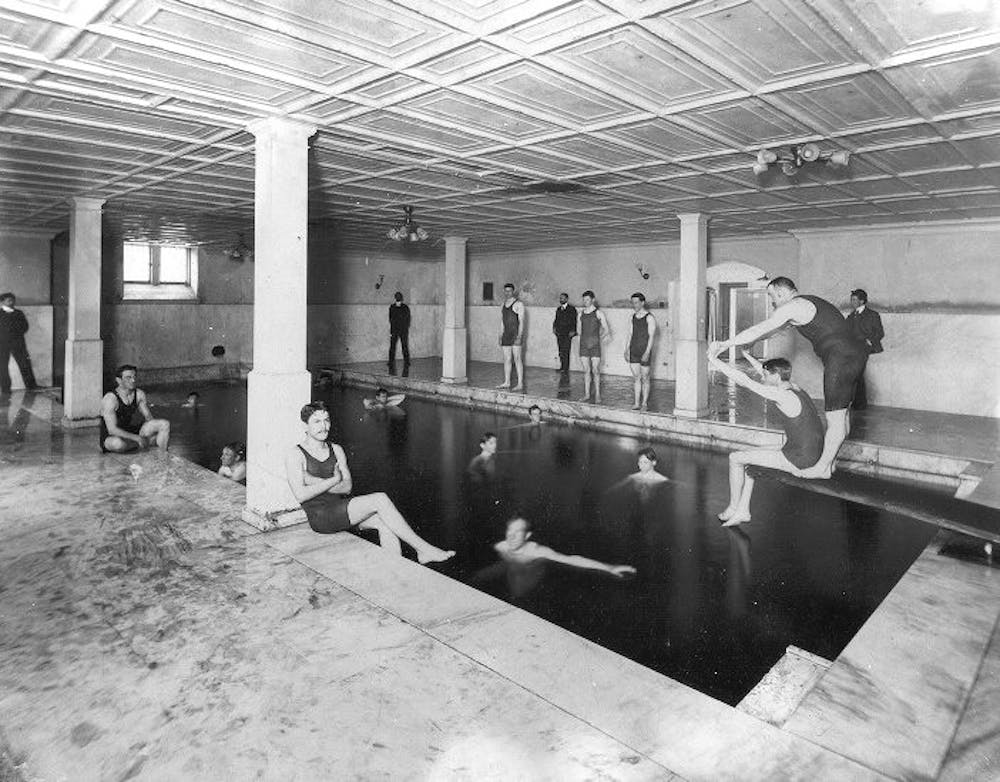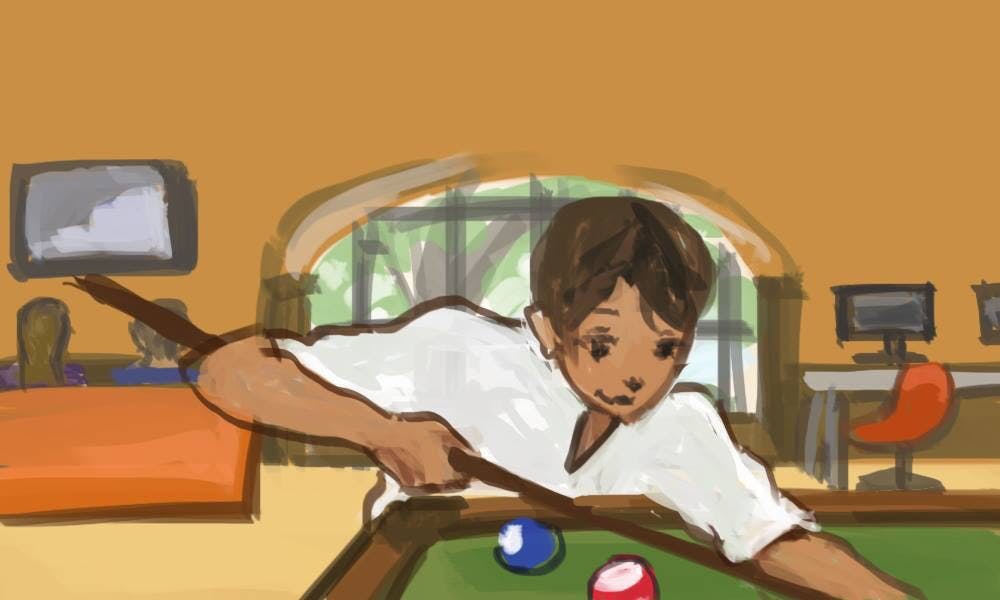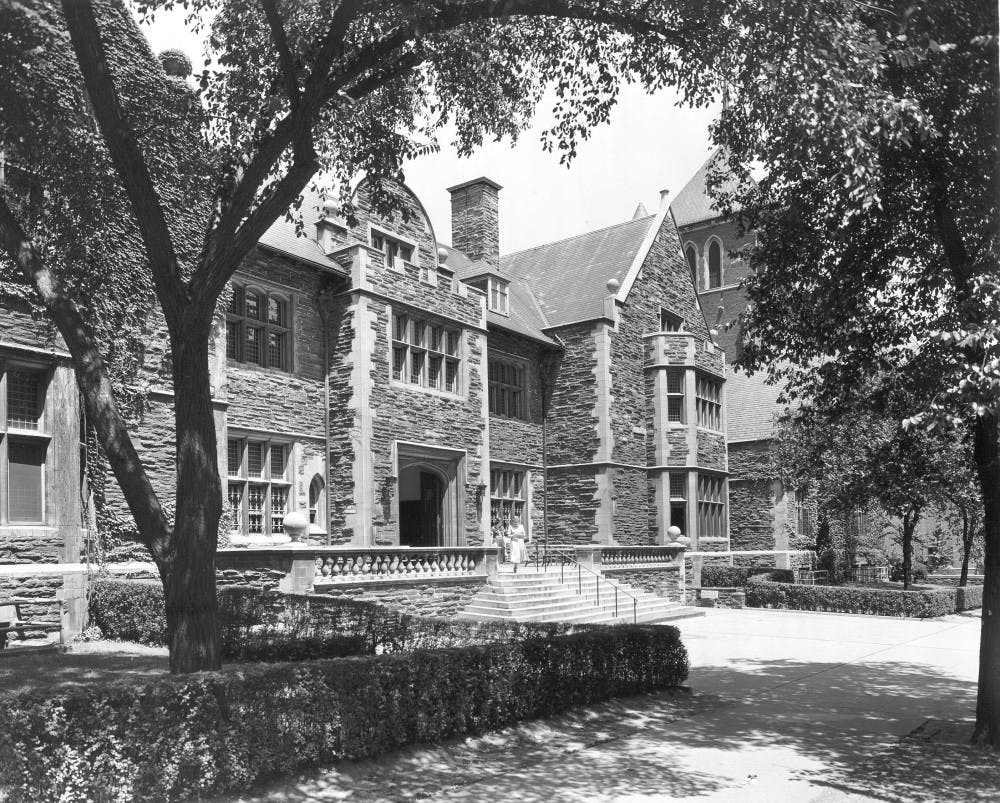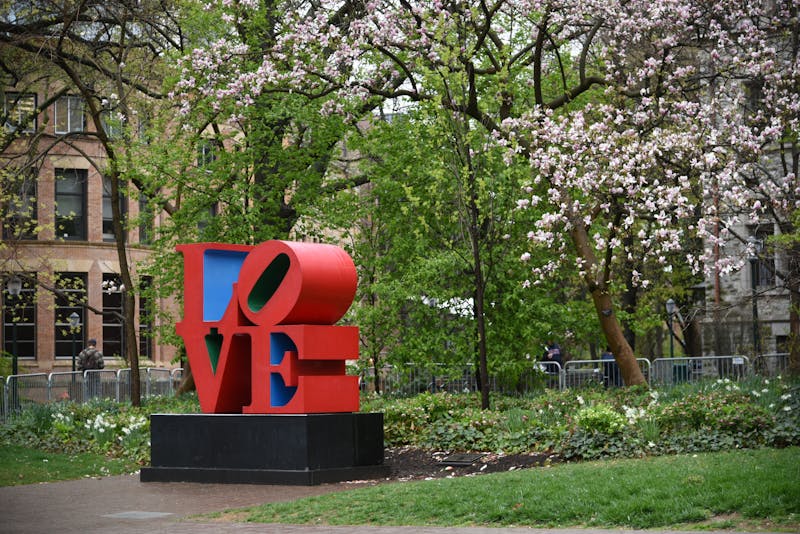
The Houston Hall swimming pool, c. 1900. (Photo from University Archives and Records Center)
Over the summer, Houston Hall underwent a $15.5 million renovation, bringing new eateries and a revamped space for members of the Penn community. One of the goals was to provide a more comfortable space to eat and work. And with improved lighting and an improved food court, it definitely does that. Even more remarkable is that the new sleek look still preserves the historic nature of Houston Hall.
However, the Houston Hall of yesteryear was more than a place to eat and work. In 1896, with a donation of $100,000 from Trustee Henry Howard Houston, Houston Hall became the first student union. It included a bowling alley, swimming pool, game room, billiards room, and a gymnasium. Although some of these amenities are dispersed throughout campus now, the message back then was clear: This was a space for students to gather and relax. Currently, it does not measure up.
Although said almost 100 years ago, the words of Charles Harrison, who served as Provost from 1894-1910, still ring true. "There is in the Hall life of English universities something which has been hitherto lacking in our University, and that is something, which has been needed to give full tone to the University career. It is not a question so much of lecture rooms and laboratories; it is his home while at the University. It is a vital part of the educational apparatus."

A central space on campus where students can gather is indeed a vital part of the education we attain. Houston is known as a hub for students and members of the Penn community, but it has slowly become a space merely to dine and work. There is no space in Houston to just relax. In fact, there are very few spaces, if any on campus, where students can just chill out or gather with friends. That is one area where we fall short when we look at our peer institutions.
For example, Cornell University’s campus includes five community centers that serve as locations where students can come and hang out. Some of these community centers include pool tables, ping pong tables, student lounges, and music/TV rooms. Dozens of other peer institutions have similar structures in place as well. This is something the administration should consider when developing future renovation plans. Penn Compact 2020 is a breathtaking vision that will undoubtedly elevate Penn’s prominence and impact. But there was no allocation for student recreational space.
In the United Kingdom, the student union takes center stage in the student social scene. At the University of Edinburgh, for example, the student union features six student-run bars. The Imperial College London’s student union features a nightclub and a cinema.

The Spruce Street entrance to Houston Hall in 1955. (Photo from University Archives and Records Center)
Penn’s campus is decentralized and a central student center would help bring the campus together. A place of this nature would be an excellent way to help address the stress of classes and provide a much needed break for students. Furthermore, this place could cultivate interactions between students who might not have crossed paths before.
Some critics say Houston Hall is the way it is because it has adapted to student need: We wanted more study space and that is why it has transformed. But more study space and places to hang out with peers are not mutually exclusive. Second, that change occurred decades ago and the campus culture is vastly different now from what it was just 10 years ago.
Penn’s campus is about working, and then working harder. Maybe we need time off to relax to just think, to hang out with friends in a lounge, to play some FIFA to take our minds of classes, to meet new people, and to experience an education beyond the classroom. The college houses do have pool tables, table tennis, and TVs designed for residents, but there is no central place on campus where all students, regardless of residence, can come together.
The Office of Student Affairs has done excellent work in finding ways to make Houston a more accessible space for students, but there is a lot more we can do as a University. For most places, the most difficult part is obtaining a physical space. We already have a physical space in Houston Hall. We just need to make it more of a student-centered space.

JAY SHAH is a College senior from New Hyde Park, N.Y. in the Biological Basis of Behavior Program. He is the former Vice President of the Undergraduate Assembly. His email is shahjay@sas.upenn.edu.
The Daily Pennsylvanian is an independent, student-run newspaper. Please consider making a donation to support the coverage that shapes the University. Your generosity ensures a future of strong journalism at Penn.
Donate







